Imperial Citadel of Thang Long is among the most famous attractions in Hanoi for tourists, especially those who are fond of learning about the cultures and histories of Vietnamese people.
It holds a special place in the hearts of those who love exploring a thousand years of Vietnamese history. Each historic point has its own story to tell, making it a truly fascinating experience.
When was the Imperial Citadel of Thang Long built?
Located at 19C Hoang Dieu Street, Dien Bien Ward, Ba Dinh District, Hanoi City, the Imperial Citadel of Thang Long stands as a testament to Vietnam’s rich history. Built in the 11th century by the Ly Dynasty, it marked a pivotal moment in the nation’s independence, rising from the foundations of a 7th-century Chinese fortress. For nearly thirteen centuries, it served as a center of regional political power.
Recognized for its exceptional historical and cultural value, the Imperial Citadel was designated one of Vietnam’s ten special national heritage sites in 2009 and inscribed on the UNESCO World Heritage List in 2010. Its enduring significance lies in its continuous role as a seat of power, layered with centuries of cultural heritage.
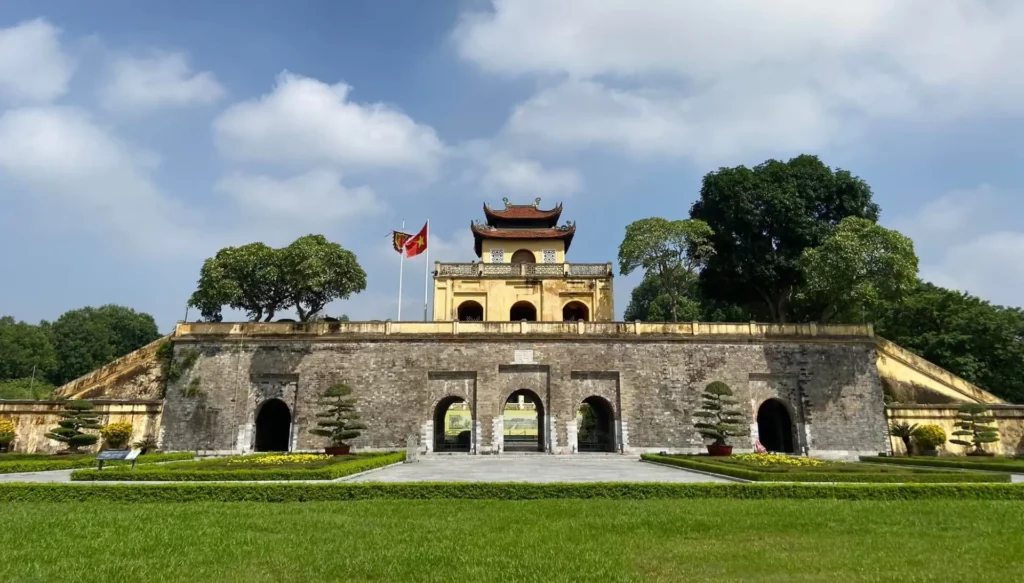
The Hanoi citadel, a historically and culturally rich relic, is the pride of Vietnamese people
Historical and cultural values of Hanoi citadel
The historical value of the Imperial Citadel of Thang Long is evident in its relics and artifacts, which narrate a continuous story of governance, economy, and culture spanning successive dynasties. This narrative begins with the ancient capital Dai La of An Nam under the Tang Dynasty, transforming into the Thang Long Forbidden City during the Ly, Tran, Early Le, Mac, and Late Le dynasties, and culminating in Thang Long – Hanoi under the Nguyen Dynasty. This historical legacy persisted through the French colonial period and continues to this day.
Culturally, the artifacts unearthed within the Imperial Citadel of Thang Long reveal a remarkable history of cultural exchange. The site bears witness to influences from China, Champa, and France, evident in its landscapes, palace layout, architectural art, and court decorations. These elements showcase the diverse cultural developments that have shaped the site throughout its existence.
What to see in the Imperial Citadel of Thang Long?
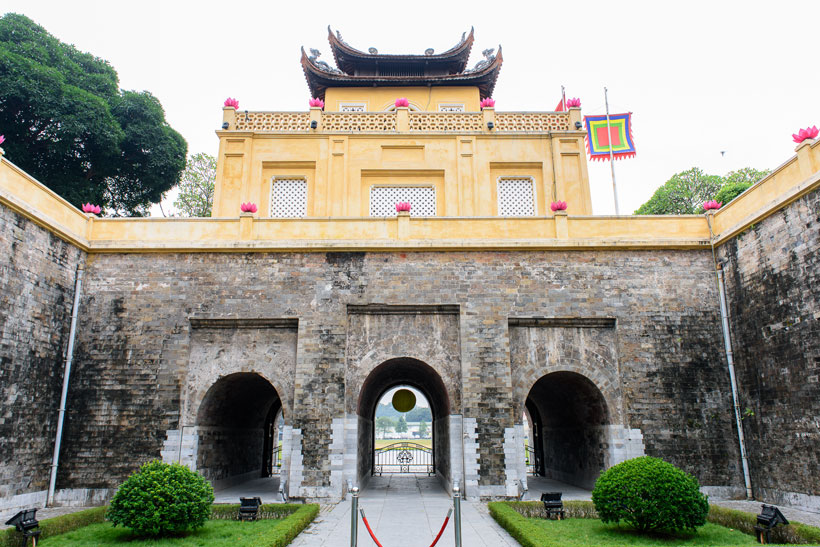
The main gate (Doan Mon)
Doan Mon is positioned to the south of Kinh Thien Palace, aligned with the Hanoi Flag Tower on the same axis. Constructed with stones and bricks, the main gate has a U-shaped structure, featuring five gates symmetrically placed along a central axis, often referred to as the “righteousness axis” of the Imperial Citadel. The primary architectural element of Doan Mon follows a watchtower gazebo design with three rolling arches. The use of rolling arch architecture not only bestowed elegance but also provided exceptional load-bearing capabilities. In contemporary times, Doan Mon, with its impressive and intricate architectural design, has become an ideal location for numerous tourists exploring the Imperial Citadel of Thang Long to capture memorable moments.
Northern gate (Cua Bac)
Chinh Bac Mon, also known as Cua Bac, stands on Phan Dinh Phung Street. It is the sole surviving entrance to the Hanoi Citadel under the Nguyen Dynasty, which was reconstructed in 1805 atop the Le Dynasty’s Northern Gate foundation.
Perched atop the gate is a watch tower gazebo where the imperial troops had a clear view of both the citadel’s surroundings and its interior, allowing them to monitor the enemy’s movements.
Today, partial restoration is ongoing to honor Hanoi Citadel’s history and figures like Nguyen Tri Phuong and Hoang Dieu, who heroically sacrificed during the defense of Thang Long Royal Citadel against the French.
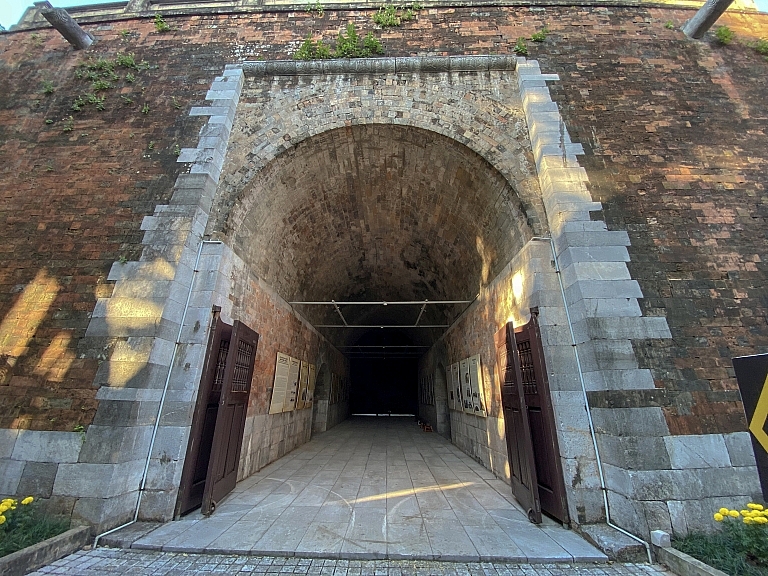
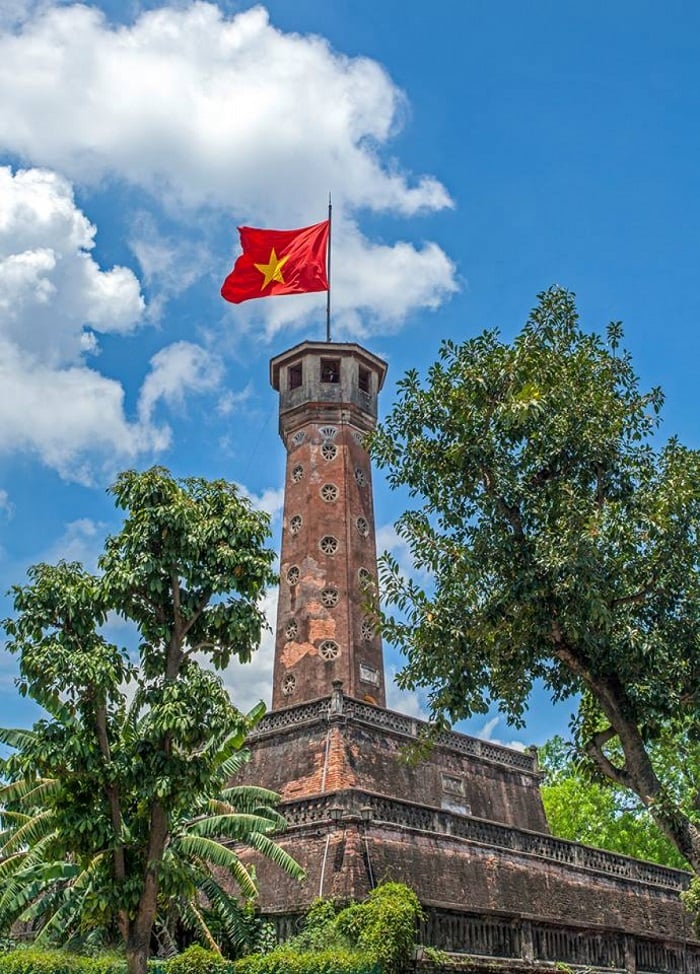
Hanoi Flag Tower
Located on Dien Bien Phu Street, the Hanoi Flag Tower was constructed in 1812 under the rule of King Gia Long in the Nguyen Dynasty. This is one of the few architectural structures in Hanoi that was fortunate enough to escape destruction by the French colonial rule during the years 1894-1897.
On October 10th, 1954, the red flag with a yellow star, the National Flag, was hoisted atop the Hanoi Flag Tower for the first time. This event marked a historic moment of significance: the day Hanoi was entirely liberated. The tower itself was recognized as a historical monument in 1989.
Kinh Thien Palace
The Kinh Thien Palace, where King Le Thai To ascended to the throne in 1428, later served as the venue for significant court ceremonies, reception of foreign dignitaries, and vital national affair discussions.
Throughout its history, Kinh Thien Palace has consistently held a central role within the Imperial Citadel of Thang Long. The foundation and threshold that still exist today are modest remnants of the palace architecture from the Le Dynasty, offering partial insights into the grandeur of the Kinh Thien Palace in the past.
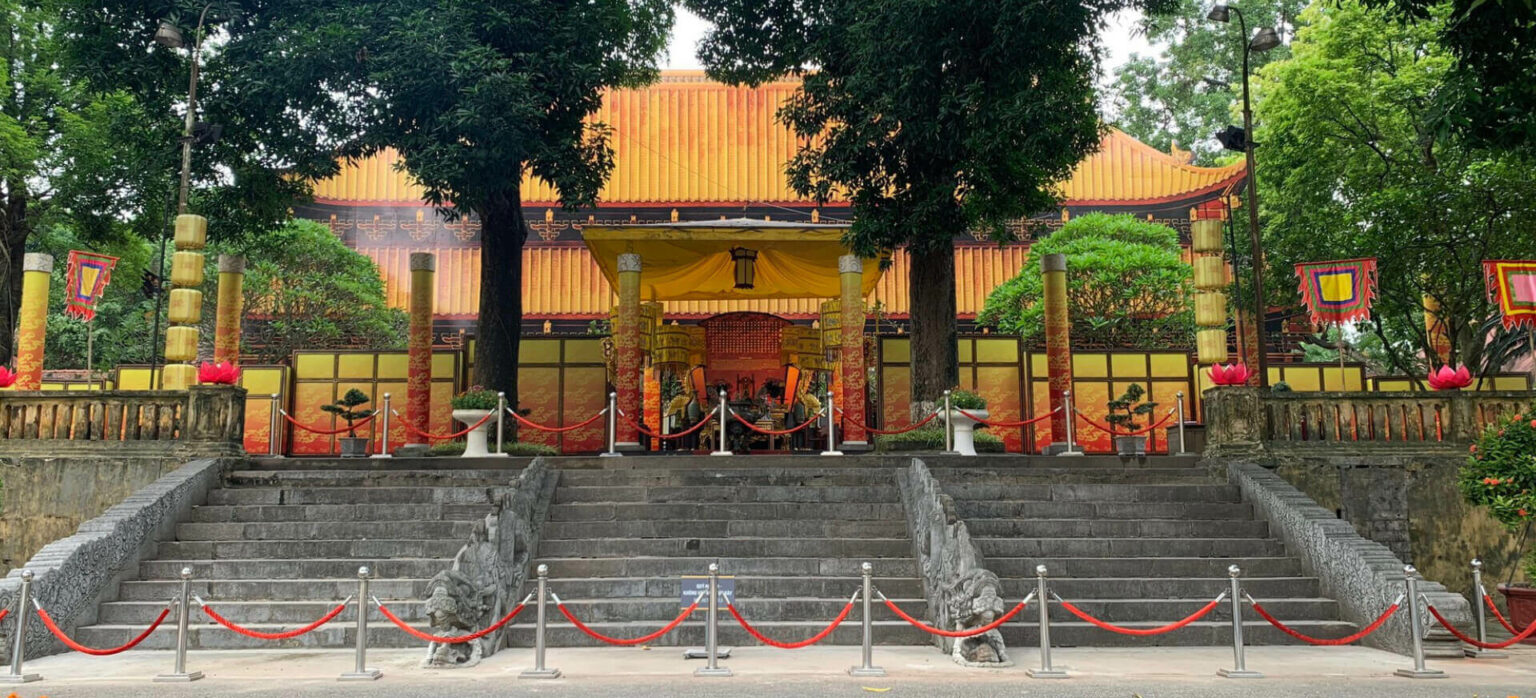
Important information for your first visit to Thang Long Citadel
Hanoi citadel opening hours and entrance fees
As you plan your visit to this Imperial Citadel of Thang Long, the following information will guide you through our opening hours and entrance fees, ensuring you make the most of your journey through time.
- Imperial Citadel of Thang Long entrance fee:
- Adults: 30,000 VND per person.
- Students aged 15 and above (with student ID) and senior Vietnamese citizens aged 60 and above (with ID or other documents proving their age): 15,000 VND per person.
- Children under 15 years old and individuals who have contributed to the revolution: Free admission
- Visiting hours: From 8:00 AM to 5:00 PM daily
Special tours & activities in Hanoi Imperial Citadel
With a great number of tourists visiting the Imperial Citadel of Thang Long each year, a lot of tours serving foreigners and locals have been carried out. These tours not only provide insightful information about the site but also offer engaging cultural experiences.
- A night at the Ancient Imperial Citadel: As you register for this tour, you will have a chance to explore the Imperial Citadel of Thang Long aglow in the night, partake in the ancestral incense ceremony at Kinh Thien Palace, engage in the Imperial Citadel Decoding game with meaningful gifts, and so on.
- Tours suitable for foreign tourists: There are tours designed for foreigners where you can take photos in royal costumes, visit and listen to the historical stories about various relics, watch folk art performances, and immerse yourself in folk culture at the souvenir stalls.
- Tours for domestic tourists: These tours are similar to the ones for foreign tourists; however, visitors will also have the opportunity to take part in an incense offering ceremony at Kinh Thien Palace and release birds to pray for peace and tranquility.
The Thang Long – Hanoi Heritage Conservation Center enhances the Imperial Citadel of Thang Long’s experience by organizing cultural events and annual festivals, including Lunar New Year and Mid-Autumn Festival celebrations. The old Citadel Hanoi also hosts significant cultural events like the Hanoi Craft Village Tourism Festival, Hanoi Ao Dai Festival, and Hanoi Book Fair. Key annual events include the Mid-Autumn Festival Experience Program and the Vietnamese New Year Program.
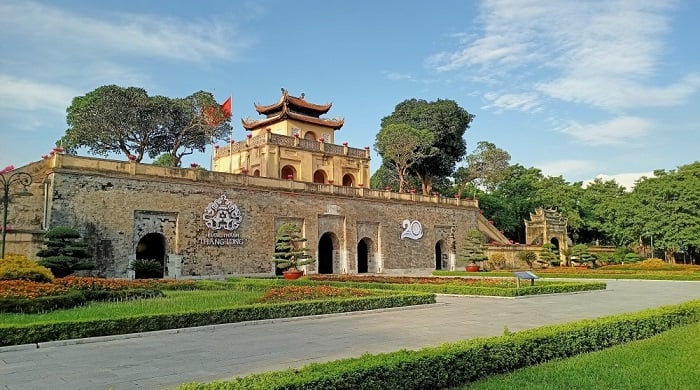
Tourists will have the opportunity to immerse themselves in Vietnam’s historical and cultural heritage at the Hanoi Imperial Citadel
Seeking a peaceful retreat in the heart of Hanoi’s bustling Old Quarter? Look no further than Areca Boutique Spa & Homestay. Our serene sanctuary offers the perfect blend of convenience and tranquility, making it an ideal base for exploring all that Hanoi has to offer.
Unwind and Rejuvenate:
Indulge in our luxurious spa treatments, designed to soothe your body and mind. Our skilled therapists utilize traditional techniques and natural ingredients to create a truly restorative experience.
Rest and Recharge:
Retreat to our cozy homestay accommodations after a day of exploring. Our well-appointed rooms provide a comfortable and inviting space to relax and recharge.
Prime Location:
Nestled in a quiet neighborhood just moments away from the Old Quarter’s vibrant energy, Areca offers the best of both worlds. Easily access iconic landmarks, bustling markets, and diverse culinary experiences, then return to your peaceful haven for a restful night’s sleep.
Experience the Best of Hanoi:
Whether you’re seeking cultural immersion, culinary adventures, or simply a relaxing escape, Areca Boutique Spa & Homestay is your gateway to discovering the rich tapestry of Hanoi.
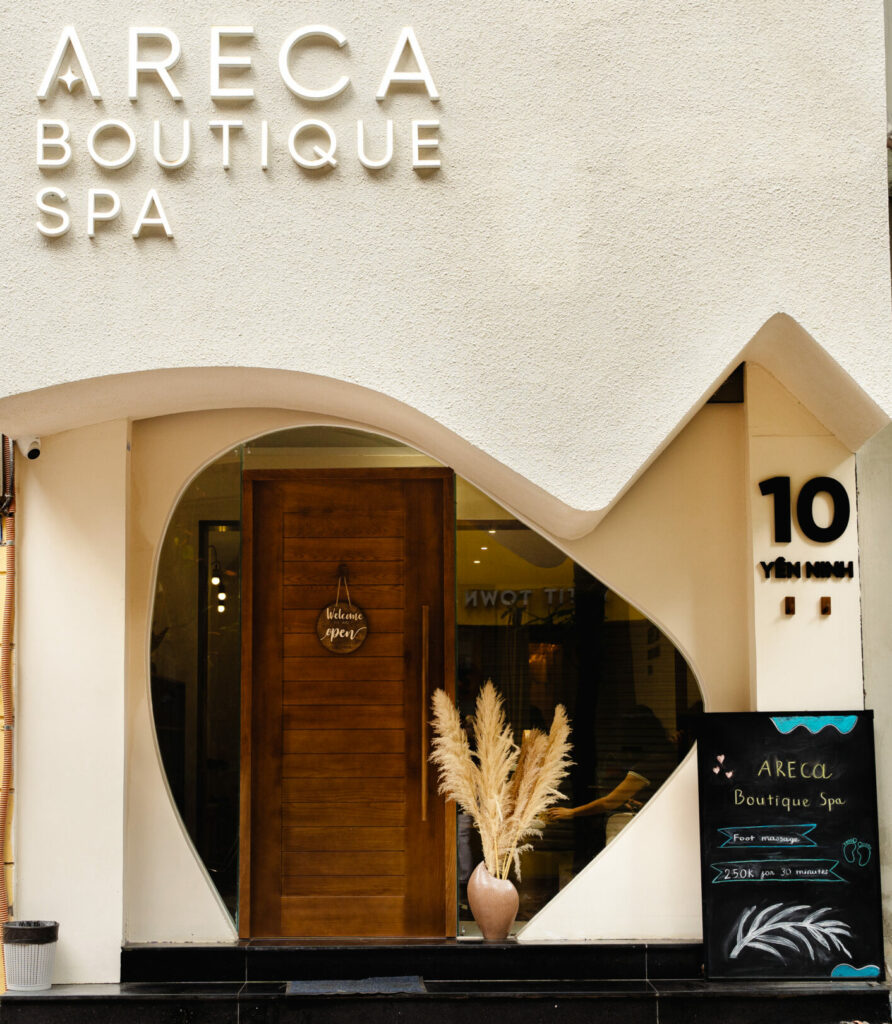
10 Yen Ninh, Ba Dinh, Ha Noi
